Nationality English | Notable works Dan DareGarth Name Frank Bellamy | |
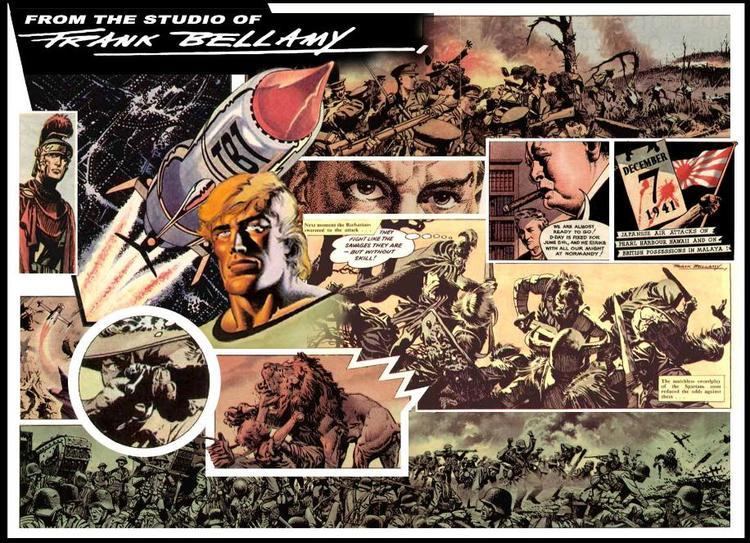 | ||
Born Frank Alfred BellamyMay 21, 1917Kettering, Northamptonshire ( 1917-05-21 ) Books Trip to Trouble, Frank Bellamy's Robin Ho, Frank Bellamy's King Arth, Fraser of Africa, High Command: The Stori | ||
Frank bellamy how to attack vacant houses youngstown ohio
Frank Bellamy (21 May 1917 – 5 July 1976) was a British comics artist, best known for his work on the Eagle comic, for which he illustrated Heros the Spartan and Fraser of Africa. He reworked its flagship Dan Dare strip.
Contents
- Frank bellamy how to attack vacant houses youngstown ohio
- The Story of World War One by Frank Bellamy
- Biography
- Career
- Comic strips drawn by Frank Bellamy
- Books
- References
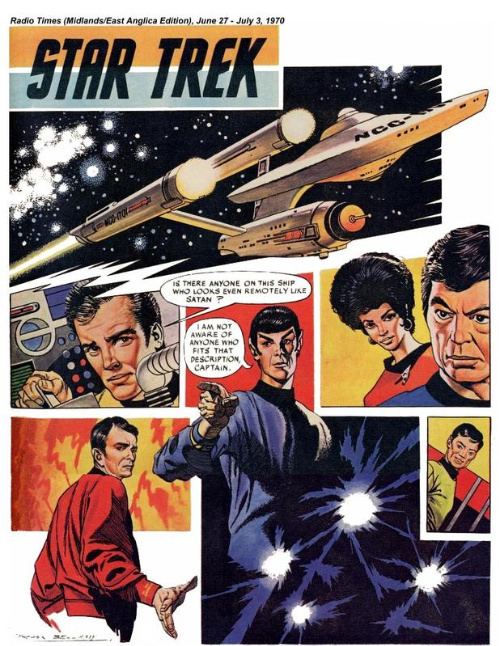
He also drew Thunderbirds in a dramatic two-page format for the weekly comic TV Century 21. He drew the newspaper strip Garth for the Daily Mirror. His work was innovative in its graphic effects and sophisticated use of colour, and in the dynamic manner in which it broke out of the then-traditional grid system.
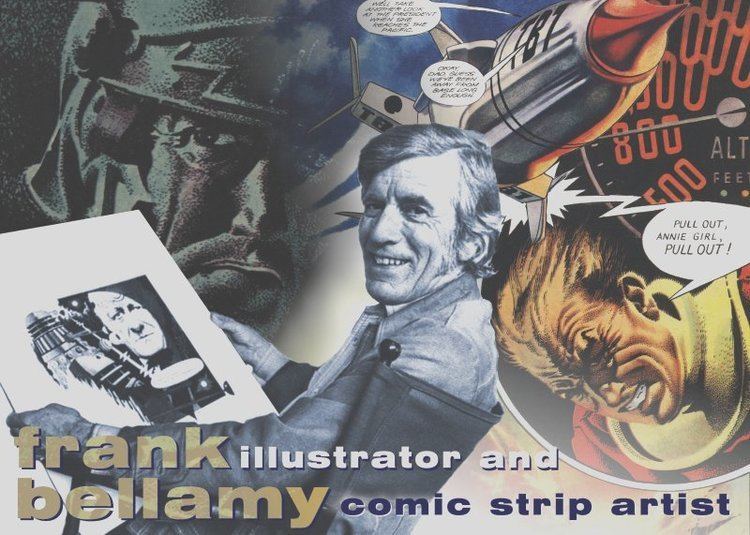
The Story of World War One by Frank Bellamy
Biography

Born in Kettering, Northamptonshire, He started work at William Blamire's studio, in Kettering in 1933. Bellamy met his wife Nancy whilst he was stationed near Bishop Auckland during World War II and was married in 1942. In 1944 their son David was born to the couple. After the war, they lived in Kettering until 1949, when they moved to Morden in south London to be closer to publishers, most of whom were based in London. Bellamy worked freelance from home from the time he left Norfolk Studios in 1953. In 1975 the couple moved back to Kettering.
Career
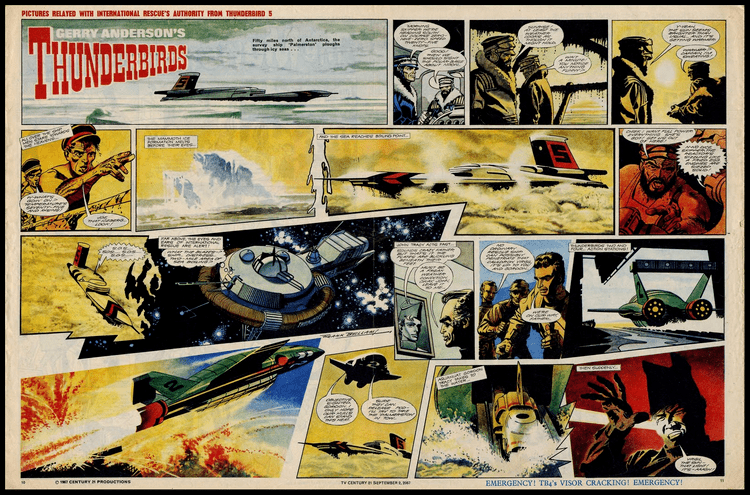
Whilst in the army, Bellamy had a weekly illustration published by the Kettering Evening Telegraph. Later, he worked in advertising (for Gibbs Dentifrice). In 1953, he began his first comic strip, called Monty Carstairs in Mickey Mouse Weekly. Shortly after he moved to Swift where his work included Swiss Family Robinson, King Arthur and Robin Hood.
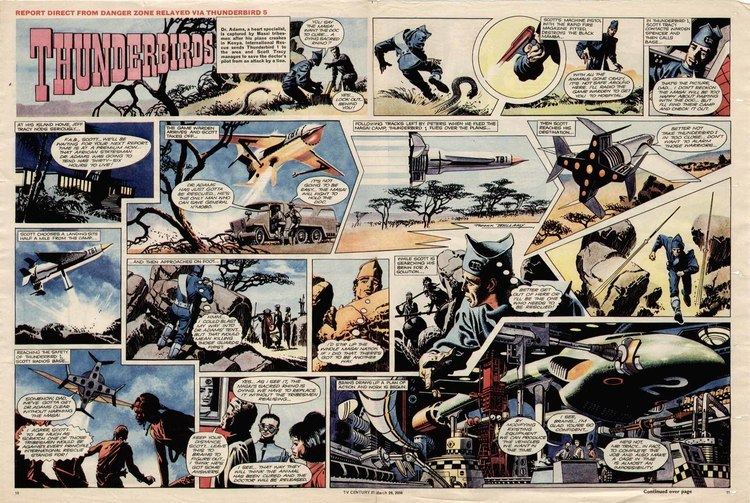
In 1957, he moved to Eagle and began working in colour on their back page biography strips: The Happy Warrior (the life of Winston Churchill), The Shepherd King (the life of the biblical King David), and The Travels of Marco Polo for which Bellamy only did eight episodes before moving to Dan Dare.
Bellamy took over Dan Dare part way through the Terra Nova storyline, replacing creator Frank Hampson. It was an awkward set-up: the new owners of Eagle thought the strip looked dated, so gave Bellamy the brief of redesigning everything, from the costumes and spacecraft to the page layouts. Bellamy was left to draw the title page unaided (in contrast to Hampson's many-hands approach, where the drawing, inking, lettering and colouring were all separately completed by a team of artists), while two of Hampson's former assistants, Keith Watson and Don Harley, had to do the second page. Bellamy's redesigns were somewhat controversial and, after he left the strip a year later, the next artist was instructed to reintroduce the original designs.
Bellamy then went on to draw two of his most celebrated strips, Fraser of Africa and Heros the Spartan. He also drew Montgomery of Alamein (the life of Field Marshal Bernard Law Montgomery) and did some work for Look and Learn.
Fraser of Africa, one of Bellamy's artistic high-water marks, was not his idea but, as he was obsessed with Africa, he was the perfect choice to draw it. Bellamy used a monochromatic sepia colour palette to reflect the sun and desert locale, with occasional bursts of bright colour. It was a challenging and unusual approach and Fraser of Africa became the Eagle's most popular strip. Bellamy insisted on proper research and even had a reader living in East Africa supplying reference material.
Heros the Spartan, a sword and sorcery adventure set in Roman times was another artistic triumph. Drawn as a two-page spread and usually organized around a complicated splash in the centre of the two pages, Heros was a bravura display of skill. The battle scenes displayed a vividness and complex layout rarely seen in comics and it won Bellamy an award (for 'Best Foreign Artist') from the American Academy of Comic Book Arts in 1972.
In November 1965, Bellamy left the fading Eagle to work for TV Century 21, where he drew the centrespread Thunderbirds strip. Rather than faithfully draw puppets, he took the artistic licence of rendering the characters as real people for a more exciting strip, as was already being done by the comic's other artists (including Ron Embleton and Mike Noble) in their strips. Apart from one short break, Bellamy drew Thunderbirds throughout its run in TV Century 21 and TV21, leaving shortly after the comic merged with Joe 90 Top Secret to become TV21 & Joe 90 in 1969. He also drew the colour splash pages for five Captain Scarlet and the Mysterons strips.
Bellamy's break from the Thunderbirds strip in the autumn of 1966 enabled him to work on an episode of the British TV series The Avengers entitled The Winged Avenger. The story featured a villainous strip cartoonist and Bellamy was asked to create all the illustrations used in the episode. He also designed the artist's studio set and the costume of the Winged Avenger himself. Filmed in December 1966, the episode aired in February 1967.
In June 1971, Bellamy began drawing the newspaper comic strip Garth which appeared in the Daily Mirror. This was the period in which intense competition with the new tabloid The Sun encouraged large helpings of nudity to be seen in British tabloids, and the strip reflected this. Bellamy's style was much more vivid than that of the original artist John Allard, and he was probably brought in to spice up the strip. Jim Edgar had been writing the strip since 1966 and shared the by-line credit with Bellamy. Bellamy applied all the graphic tricks in his arsenal from stippling and crosshatching to chiaroscuro inking to create a modern and eye-catching look for Garth unlike anything else appearing in newspapers at the time. Bellamy worked continuously on Garth for the next five years, although drawing in black and white rather than colour gave him time to maintain a number of other regular commissions. During this period he drew the first comic strips The Sunday Times had ever run in its magazine as non-fiction journalism. He also regularly produced illustrations for the BBC's Radio Times television listings magazine, in particular for the Doctor Who television programme.
Frank Bellamy died suddenly in 1976, at the height of his powers. He had plans for many projects, including a Western strip he was to write himself, inspired by the spaghetti westerns of Sergio Leone, but none of that work survives.
Comic strips drawn by Frank Bellamy
Eagle:
TV21:
Joe 90 Top Secret:
Garth:
